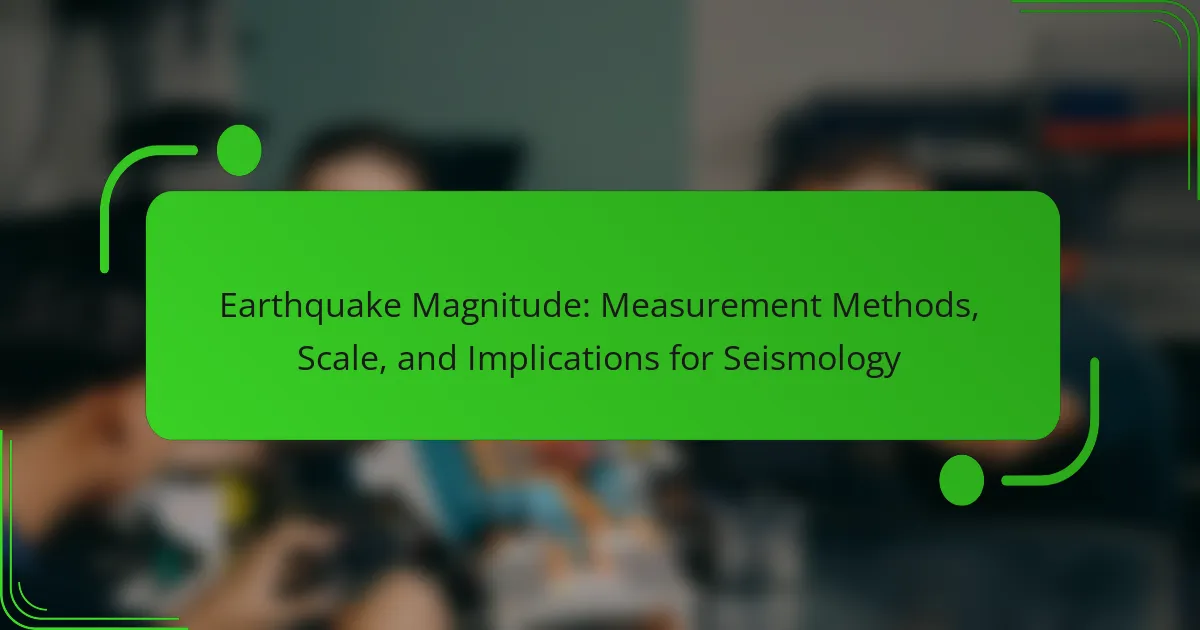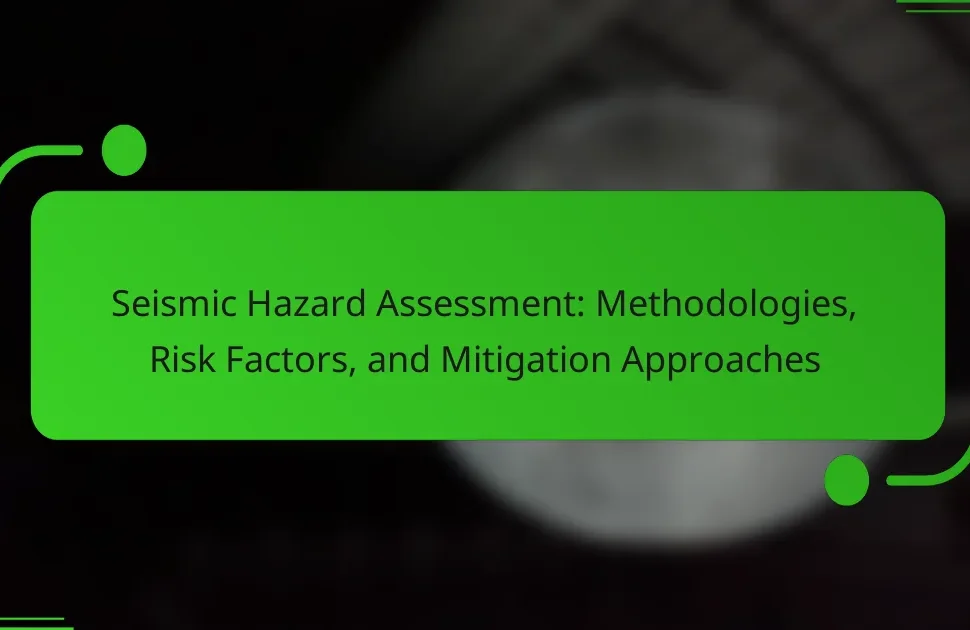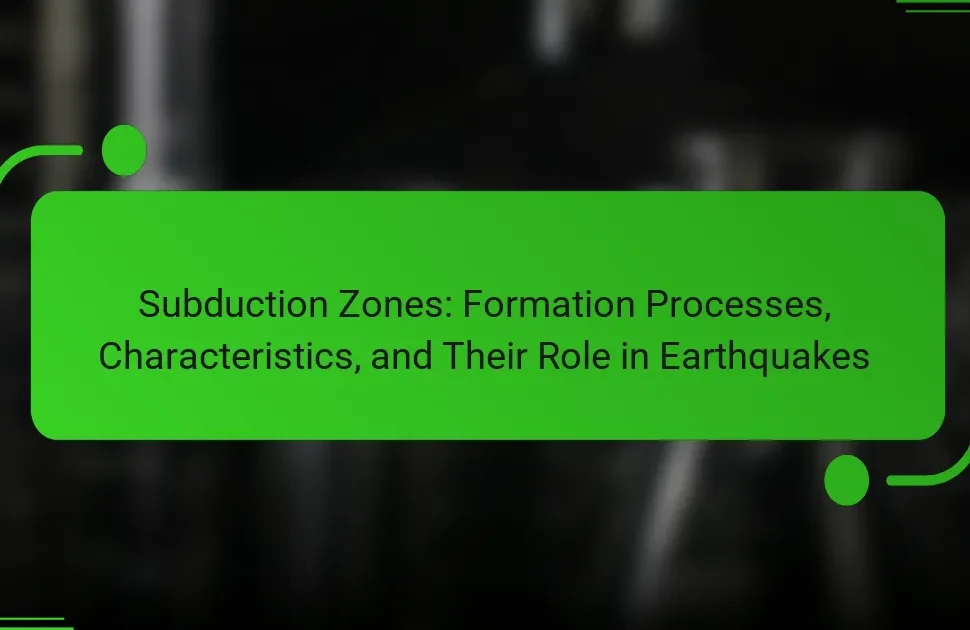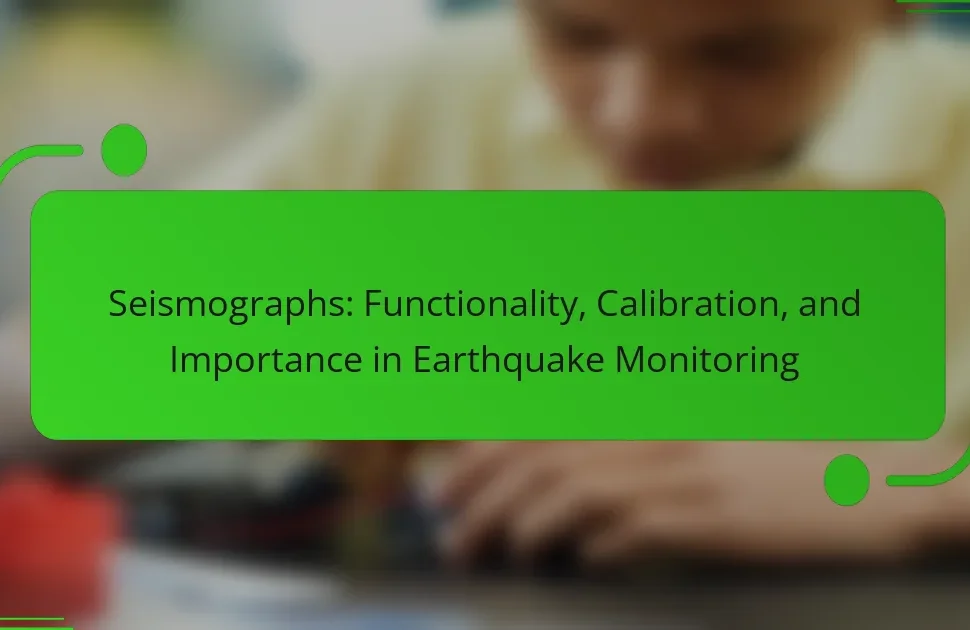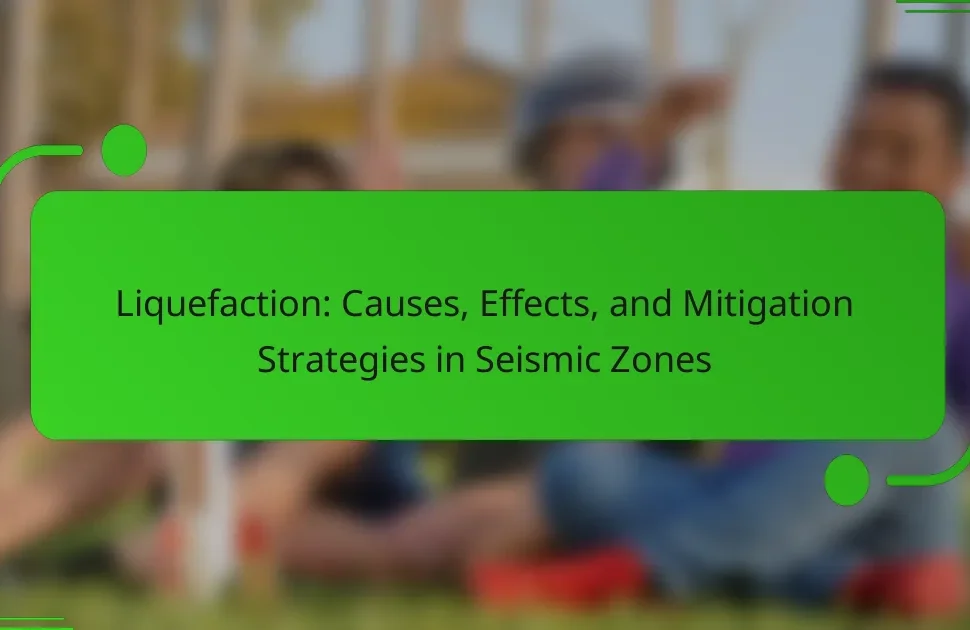Earthquake magnitude is a numerical measure of the energy released during an earthquake, primarily quantified using scales such as the Moment Magnitude Scale (Mw) and the Richter scale. The Moment Magnitude Scale provides a more accurate assessment for larger earthquakes, indicating that each whole number increase represents approximately 31.6 times more energy release. Various measurement methods, including body wave magnitude (Mb) and surface wave magnitude (Ms), are employed depending on the characteristics of the seismic waves. Understanding earthquake magnitude is essential for evaluating potential damage, guiding emergency responses, and informing seismic building codes and land-use planning. This article explores the measurement methods, scales, and implications of earthquake magnitude for seismology and public safety.
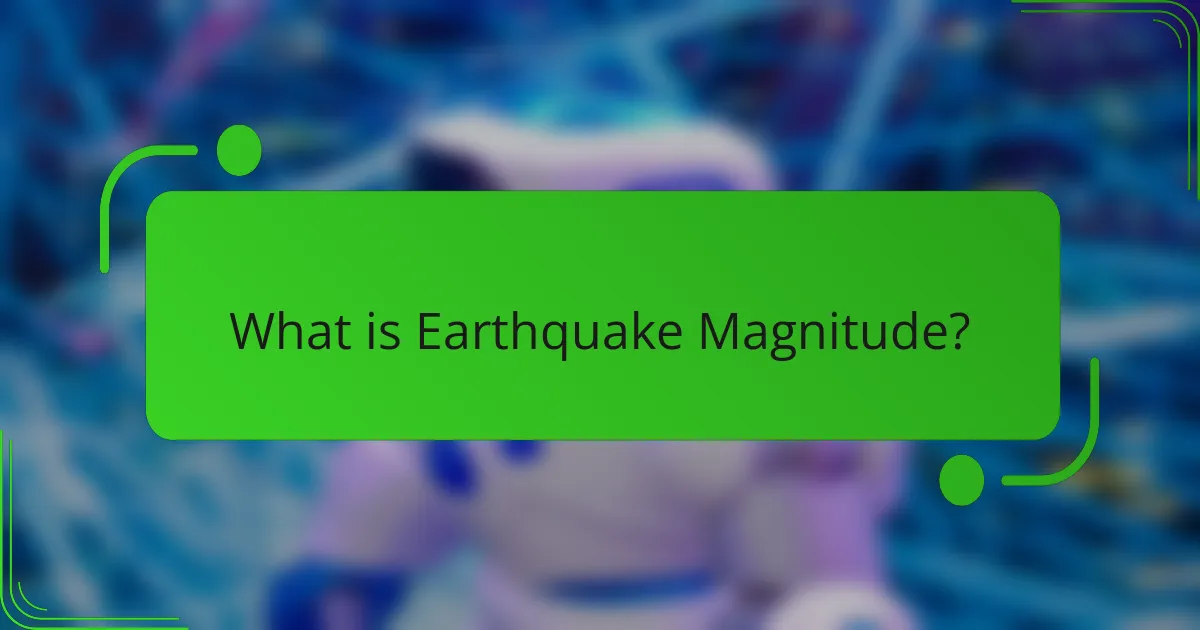
What is Earthquake Magnitude?
Earthquake magnitude is a numerical measure of the energy released during an earthquake. It quantifies the size of the seismic event based on data from seismic waves. The most common scale used is the Moment Magnitude Scale (Mw). This scale provides a more accurate measurement for larger earthquakes compared to older scales. Each whole number increase on the scale represents approximately 31.6 times more energy release. For example, a magnitude 6 earthquake releases over 31 times more energy than a magnitude 5 earthquake. Earthquake magnitude is crucial for assessing potential damage and guiding emergency response efforts.
How is earthquake magnitude defined in seismology?
Earthquake magnitude in seismology is defined as a quantitative measure of the energy released during an earthquake. This measurement is typically determined using data from seismic waves recorded by seismographs. The most common scale used is the moment magnitude scale (Mw), which accounts for the seismic moment of the earthquake. Seismic moment is calculated based on the area of the fault that slipped, the average amount of slip, and the rigidity of the rocks involved. The moment magnitude scale is logarithmic, meaning each whole number increase represents a tenfold increase in measured amplitude and approximately 31.6 times more energy release. This method provides a consistent and accurate representation of an earthquake’s size across different regions and depths.
What are the key characteristics of earthquake magnitude?
Earthquake magnitude quantifies the energy released during an earthquake. It is measured using various scales, primarily the Richter scale and the moment magnitude scale (Mw). The Richter scale measures seismic waves’ amplitude, while the moment magnitude scale accounts for the fault area and slip. Magnitude values are logarithmic, meaning each whole number increase represents a tenfold increase in amplitude. For example, a magnitude 6.0 earthquake releases approximately 31.6 times more energy than a magnitude 5.0 quake. Magnitude is crucial for assessing earthquake impacts and guiding response efforts. Accurate magnitude measurement helps in understanding seismic activity patterns and potential hazards.
Why is understanding earthquake magnitude important?
Understanding earthquake magnitude is important because it quantifies the energy released during an earthquake. This measurement helps predict potential damage and informs emergency response efforts. Accurate magnitude assessments guide building codes and land-use planning in earthquake-prone areas. For instance, the moment magnitude scale (Mw) is widely used due to its reliability across various earthquake sizes. Historical data shows that larger magnitudes correlate with increased destruction. The 2010 Haiti earthquake, with a magnitude of 7.0, resulted in catastrophic damage and loss of life. Understanding magnitude also aids in public education about earthquake risks and preparedness.
What are the different scales used to measure earthquake magnitude?
The different scales used to measure earthquake magnitude include the Richter scale, the Moment Magnitude scale, and the Body Wave Magnitude scale. The Richter scale quantifies the seismic energy released by an earthquake. It is logarithmic, meaning each whole number increase represents a tenfold increase in amplitude. The Moment Magnitude scale is more widely used today. It accounts for the seismic moment, which includes fault area and slip. The Body Wave Magnitude scale measures the amplitude of body waves. Each scale serves specific purposes in seismology. They provide critical information for assessing earthquake impacts and risks.
How does the Richter scale measure earthquake magnitude?
The Richter scale measures earthquake magnitude by quantifying the amplitude of seismic waves. It uses a logarithmic scale, meaning each whole number increase represents a tenfold increase in measured amplitude. The scale ranges from 0 to 10, with higher values indicating more powerful earthquakes. It calculates the magnitude based on the distance from the seismic station to the earthquake’s epicenter. The formula incorporates the maximum amplitude of the seismic waves recorded. For example, a magnitude 5 earthquake has seismic waves ten times larger than a magnitude 4. The Richter scale provides a consistent method for comparing earthquake sizes. It was developed in 1935 by Charles F. Richter, a seismologist.
What is the moment magnitude scale and how does it differ from others?
The moment magnitude scale (Mw) quantifies the size of earthquakes based on seismic moment. Seismic moment is calculated from the area of the fault that slipped and the amount of slip on the fault. This scale provides a more accurate measure for large earthquakes than previous scales, such as the Richter scale. The Richter scale measures amplitude of seismic waves, which can underestimate larger quakes. The moment magnitude scale is logarithmic, like the Richter scale, but is more consistent across a wider range of earthquake sizes. The moment magnitude scale is now the standard used by seismologists for reporting earthquake magnitudes.
Why are different scales necessary for measuring earthquakes?
Different scales are necessary for measuring earthquakes to capture various aspects of seismic activity. Each scale provides unique insights into the earthquake’s characteristics. The Richter scale measures the amplitude of seismic waves. It is useful for small to medium-sized earthquakes. The moment magnitude scale (Mw) accounts for the fault area and slip, offering a more comprehensive assessment. The Modified Mercalli Intensity scale evaluates the earthquake’s effects on people and structures. This scale varies based on location and building types. Different scales help scientists and emergency responders understand the earthquake’s impact and potential damage. Each scale serves a specific purpose, ensuring accurate communication and response strategies.
How does earthquake magnitude impact society and the environment?
Earthquake magnitude significantly impacts society and the environment. Higher magnitudes correlate with increased destruction and loss of life. For instance, a magnitude 7.0 earthquake can cause extensive damage to buildings and infrastructure. The 2010 Haiti earthquake, which registered a magnitude of 7.0, resulted in over 230,000 fatalities and displaced millions.
In addition to immediate destruction, earthquakes can lead to long-term societal challenges. Economic losses can reach billions of dollars, affecting local and national economies. The 1994 Northridge earthquake in California caused an estimated $44 billion in damages.
Environmental impacts also arise from significant earthquakes. Ground shaking can trigger landslides and tsunamis, altering landscapes and ecosystems. The 2004 Indian Ocean earthquake, with a magnitude of 9.1, generated a tsunami that affected multiple countries and devastated coastal environments.
Overall, the magnitude of an earthquake directly influences its societal and environmental consequences. Higher magnitudes result in more severe impacts, both immediate and long-term.
What are the potential consequences of high-magnitude earthquakes?
High-magnitude earthquakes can lead to significant destruction and loss of life. They often cause widespread damage to infrastructure, including buildings, bridges, and roads. This damage can result in economic losses running into billions of dollars. High-magnitude earthquakes can also trigger landslides and tsunamis, further compounding the devastation. In 2011, the Tōhoku earthquake in Japan, which measured 9.0, resulted in a tsunami that caused catastrophic damage and over 18,000 deaths. Additionally, these earthquakes can disrupt essential services such as water, electricity, and communication networks. The psychological impact on affected populations can also be profound, leading to long-term mental health issues.
How do different magnitudes affect emergency response and preparedness?
Different magnitudes of earthquakes significantly impact emergency response and preparedness. Higher magnitude earthquakes typically cause more destruction and require more extensive emergency resources. For instance, a magnitude 5.0 earthquake may result in localized damage, while a magnitude 7.0 can lead to widespread devastation. Emergency services must adjust their response strategies based on the expected magnitude. The Federal Emergency Management Agency (FEMA) emphasizes that preparedness plans must account for potential magnitude-related impacts. For example, a magnitude 8.0 earthquake could overwhelm local resources, necessitating state and federal assistance. Historical data shows that larger earthquakes increase the likelihood of secondary disasters, such as tsunamis or landslides. Consequently, emergency preparedness must include training, resource allocation, and community education tailored to varying magnitudes.
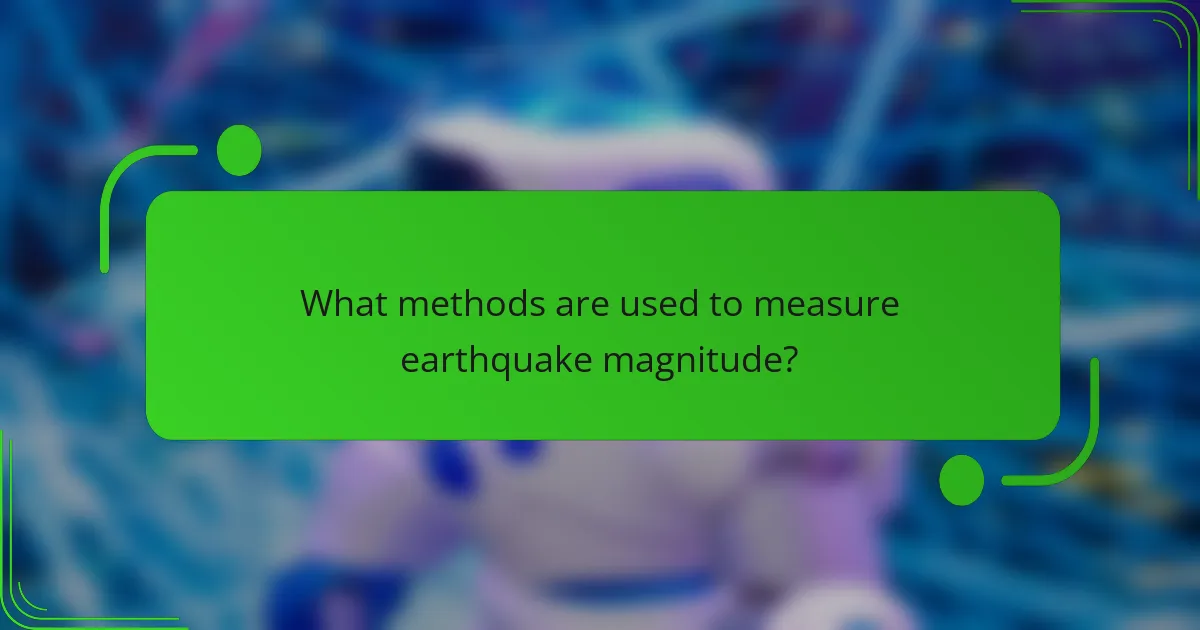
What methods are used to measure earthquake magnitude?
Seismologists use several methods to measure earthquake magnitude. The most common method is the Richter scale, which quantifies the amplitude of seismic waves. Another widely used method is the moment magnitude scale (Mw), which considers the seismic moment of the earthquake. The moment magnitude scale provides a more accurate measurement for larger earthquakes. The body wave magnitude (Mb) and surface wave magnitude (Ms) scales are also utilized based on specific types of seismic waves. Each method has its applications depending on the earthquake’s characteristics. These methodologies are essential for understanding the energy released during seismic events.
How are seismic waves utilized in magnitude measurement?
Seismic waves are utilized in magnitude measurement by analyzing their amplitude and frequency. Seismographs detect these waves during an earthquake. The amplitude of seismic waves correlates with the energy released. Higher amplitude indicates a larger earthquake magnitude. Additionally, the frequency of the waves helps distinguish between different types of seismic waves. For instance, P-waves and S-waves have distinct characteristics. The moment magnitude scale is commonly used for precise measurements. This scale considers the seismic moment, which includes fault area and slip. Accurate magnitude determination is crucial for assessing earthquake impact.
What types of seismic waves are analyzed for magnitude calculation?
Seismic waves analyzed for magnitude calculation include primary waves (P-waves) and secondary waves (S-waves). P-waves are compressional waves that travel fastest through the Earth. They are detected first by seismographs. S-waves are shear waves that follow P-waves. They travel slower and cause more ground shaking. The amplitude of these waves is measured to determine earthquake magnitude. The Richter scale and moment magnitude scale utilize these measurements. These scales provide a quantitative assessment of earthquake size.
How do seismographs contribute to measuring earthquake magnitude?
Seismographs measure earthquake magnitude by detecting and recording ground motion. They consist of a mass suspended on a spring, which remains stationary while the ground moves during an earthquake. This relative motion is captured as a waveform on a recording medium. The amplitude of these waves corresponds to the energy released by the earthquake.
Seismographs also provide data on the frequency and duration of seismic waves. These factors are essential in calculating the earthquake’s magnitude using established scales like the Richter scale or moment magnitude scale. Historical data shows that seismographs have been crucial since their invention in the late 19th century. Their accuracy has improved with advancements in technology, allowing for precise magnitude measurement.
What advancements have been made in measuring earthquake magnitude?
Recent advancements in measuring earthquake magnitude include the development of more sensitive seismometers. These devices can detect smaller seismic waves than previous models. Improved algorithms now analyze seismic data more accurately. Machine learning techniques are also being applied to enhance magnitude estimation. The use of satellite technology has enabled the measurement of ground deformation during quakes. This provides additional data for assessing earthquake impacts. Real-time data sharing has improved response times and public safety. Enhanced global seismic networks allow for better monitoring of earthquakes worldwide.
How has technology improved the accuracy of magnitude measurements?
Technology has significantly improved the accuracy of magnitude measurements in seismology. Advanced seismic sensors now capture ground motion with high precision. Digital recording systems replace analog methods, allowing for better data analysis. Real-time data transmission enhances immediate assessment of seismic events. Improved algorithms process data more efficiently, reducing human error. Machine learning techniques analyze patterns in seismic waves, leading to more accurate magnitude estimations. GPS technology provides precise location data, refining the understanding of earthquake impacts. These advancements collectively lead to enhanced reliability in reporting earthquake magnitudes.
What role does data analysis play in modern seismology?
Data analysis plays a crucial role in modern seismology by interpreting seismic data to understand earthquakes. It helps in detecting, locating, and characterizing seismic events. Advanced algorithms process vast amounts of data from seismic sensors. This analysis allows scientists to identify patterns and predict future seismic activity. Data analysis also aids in assessing earthquake magnitudes using established scales like the Richter scale. Real-time data processing enhances emergency response efforts during seismic events. According to the United States Geological Survey (USGS), data analysis improves the accuracy of seismic hazard assessments. This accuracy is vital for urban planning and infrastructure resilience.
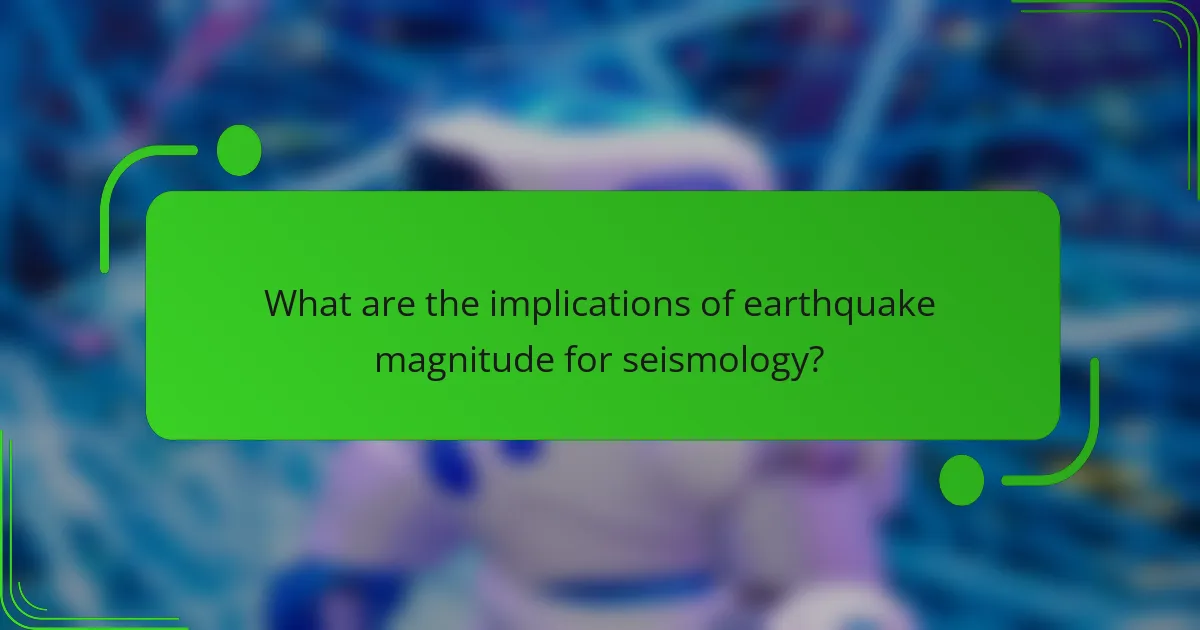
What are the implications of earthquake magnitude for seismology?
Earthquake magnitude significantly impacts seismology by providing a quantitative measure of an earthquake’s size. Magnitude scales, such as the Richter and moment magnitude scales, allow seismologists to compare the energy released by different earthquakes. This measurement helps in assessing potential damage and understanding seismic risk in various regions. For instance, a magnitude 7 earthquake can release over 30 times more energy than a magnitude 6 earthquake. Accurate magnitude assessment is essential for earthquake preparedness and response strategies. It also aids in the development of seismic building codes and land-use planning. Furthermore, magnitude data contributes to the study of tectonic processes and the behavior of fault lines. Overall, understanding earthquake magnitude is crucial for advancing seismological research and improving public safety.
How does earthquake magnitude influence seismic research and studies?
Earthquake magnitude significantly influences seismic research and studies by determining the scale of seismic events. Magnitude affects how researchers prioritize areas for study and resource allocation. Higher magnitude earthquakes typically result in more extensive damage, leading to increased research interest. The moment magnitude scale, commonly used, quantifies the energy released during an earthquake. This scale allows scientists to compare seismic events objectively. Research often focuses on understanding the effects of larger magnitudes on infrastructure and ecosystems. Historical data shows that significant earthquakes lead to advancements in building codes and disaster preparedness. For example, the 2011 Tōhoku earthquake prompted extensive studies on tsunami risks and early warning systems. Thus, earthquake magnitude shapes both the focus and methodology of seismic research.
What trends have been observed in recent earthquake magnitudes?
Recent earthquake magnitudes show an increase in frequency of higher magnitude events. Data from the United States Geological Survey (USGS) indicates a rise in earthquakes of magnitude 6.0 and above over the past decade. For instance, 2021 recorded the highest number of significant earthquakes since 2010. Additionally, the global seismic network has detected more earthquakes in regions previously considered stable. This trend suggests potential changes in tectonic activity patterns. Studies also indicate that climate change may influence seismic activity by affecting stress on fault lines.
How does magnitude data contribute to understanding tectonic activity?
Magnitude data quantifies the energy released during an earthquake. This quantification helps seismologists assess the severity of tectonic activity. Higher magnitude values indicate more significant tectonic shifts and potential damage. Analyzing magnitude data over time reveals patterns in tectonic movements. For instance, the moment magnitude scale measures larger quakes more accurately. Historical magnitude records allow researchers to identify trends in seismic activity. This data can also inform building codes and disaster preparedness strategies. Ultimately, magnitude data is essential for understanding and predicting tectonic behavior.
What practical insights can be gained from understanding earthquake magnitude?
Understanding earthquake magnitude provides essential insights for disaster preparedness and response. Magnitude quantifies the energy released during an earthquake. This measurement helps identify the potential damage in affected areas. For instance, a magnitude 7.0 earthquake can cause severe destruction, while a magnitude 5.0 typically results in minor damage.
Emergency services use magnitude data to allocate resources effectively. Communities can develop building codes based on expected magnitudes in their region. Historical data on magnitudes aids in assessing seismic risks. This knowledge informs public safety campaigns and evacuation plans.
In summary, understanding earthquake magnitude is crucial for mitigating risks and enhancing community resilience against seismic events.
How can communities prepare for earthquakes based on magnitude predictions?
Communities can prepare for earthquakes based on magnitude predictions by implementing early warning systems and conducting regular drills. Early warning systems can provide real-time alerts, allowing residents to take cover before shaking occurs. Regular drills familiarize residents with safety protocols, enhancing their readiness.
Communities should also develop and maintain emergency response plans tailored to predicted magnitudes. Such plans should include evacuation routes and emergency contact information. Additionally, infrastructure should be assessed and retrofitted to withstand predicted magnitudes.
Education on earthquake safety is crucial. Informing residents about the safest practices during an earthquake can reduce injuries. According to the United States Geological Survey, communities that prepare effectively can significantly lower risks and enhance safety in the event of an earthquake.
What best practices should be followed in earthquake-prone areas?
Residents in earthquake-prone areas should follow specific best practices for safety. Secure heavy furniture and appliances to walls to prevent tipping. Create an emergency plan that includes evacuation routes and communication strategies. Regularly practice earthquake drills to ensure preparedness. Keep emergency supplies, including water, food, and first-aid kits, readily available. Identify safe spots in each room, such as under sturdy furniture, to take cover during tremors. Stay informed about local seismic activity and community resources. These practices are supported by guidelines from organizations like the Federal Emergency Management Agency (FEMA), which emphasizes preparedness in earthquake-prone regions.
Earthquake magnitude is a critical measurement that quantifies the energy released during seismic events, primarily using the Moment Magnitude Scale (Mw) for accurate assessments. This article explores the definitions, methods, and scales used to measure earthquake magnitude, including the Richter scale and the Body Wave Magnitude scale, highlighting their unique applications in seismology. It discusses the implications of earthquake magnitude for assessing potential damage, informing emergency response, and understanding tectonic activity, as well as trends in recent seismic events. The article emphasizes the importance of magnitude data in enhancing public safety and preparedness in earthquake-prone regions.
